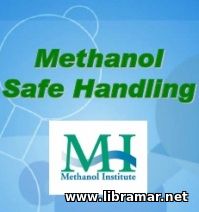 This informative training booklet provides the basic required info and necessary instructions to follow on safe handling of the methanol cargo during the sea transportation - it was prepared and released by the professionals of the world recognized Methanol Institute, which established more than a century ago and serves as the global trade association for the world Methanol Industry; it directs product stewardship activities and initiates marker development efforts.
The readers will get all critical information of the marine transportation of methanol, including properties of methanol, understanding the risks involved, managing the health risk, methanol inhalation toxicity data, methanol ingestion, treatment for exposure, personal protection, detection of methanol, detector tubes, electronic instruments, absorbent tubes, biological monitoring, managing fire risks etc.
The booklet starts with the several accidents occurred during the transportation of the methanol - these case studies give the idea how dangerous the substance may be to the people and the environment when handled improperly. You definitely have to go through this booklet if you intend to get involved in any related activities. There is also a nice training video film which can be used in addition to this booklet. /span>
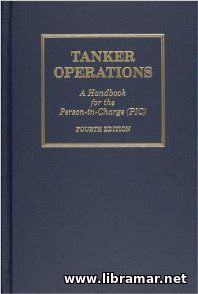 This 4th updated edition of "Tanker Operations" has undergone substantial change since it was last revised in 1992. The text has been completely reorganized with the addition of new subject material, illustrations, review questions, and a glossary of key acronyms and terms.
As many readers of Tanker Operations can attest, this text is - and will always be - a work in progress as long as the design, equipment, regulations, and operational procedures on tank vessels continue to evolve. I must admit that underestimated the magnitude of this project and, as a result, have a much greater appreciation for the efforts of Greg Marton in producing the original work in 1978.
This text is intended primarily for individual» entering the tanker industry. However, seasoned tanker mates, barge tankermen, and many of the ashoreside staff may find the information in this edition of practical value. In recent years, the rules governing the minimum qualifications for personnel dealing with the service of tank vessels have changed both domestically and internationally. In addition to obtaining practical sea experience, individuals working on tank vessels must now complete an approved training program In cargo handling and fire fighting. With these requirements in mind, it seemed appropriate for this edition of Tanker Operations to serve as the standard reference for this specialized cargo training...
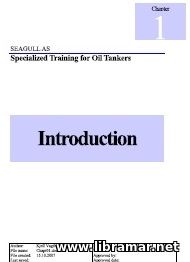 The oil transportation by sea was the indirect though obvious result of the development of the first oil well. The oil had been known to be there deep below the earth surface for quite some time. The indications are there saying that the Chinese people obtained relatively small quantities of mineral oil from shallow mines long time (several thousand years) ago; however, since the quantities were insignificant, the Middle East people of those times never used to justify the time and energy required to developing it as a fuel for the multitude of various purposes - the situation quite opposite to the one we have today, in the Industrial Age.
The very first mineral oil well was sunk in Pennsylvania in June 1859 with its depth of some 17 feet. The Elizabeth Watts is usually credited with being the very first vessel to transport a full cargo of mineral oil across the Atlantic ocean. The career of this remarkable ship in 1861; however, there were several factors involved that tended to retard the development of the early tanker; even then the oil was regarded as a very dangerous cargo.
Leakages happening to the barrels stored in the cargo holds resulted in the areas located straight below the deck permeated with the gas slowly making its way into the living quarters. With the introduction of the iron ship hulls these difficulties have been more or less eliminated. Some of the newly built tankers were fitted with the separate oil tanks...
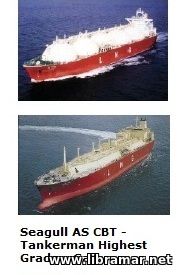 Here is another part of the computer-based training (CBT) programme by Seagull AS. It is intended to cover the requirements for levels 1 and 2 training as required by Chapter 5 Reg. V/1 & Sec. A-V/1 1.2, 2.2 of the STCW 95. The course addresses the topics vitally important for the safe carriage of the liquefied gas by sea - physics and chemistry of the gases, health hazards, all applicable regulations and rules, ship design, cargo containment and handling systems, safety of the ship and crew, various cargo handling operations, emergency operations and some other related information.
The material contained in this booklet will help readers improve their skills and get some additional knowledge of the subject; this, in turn, will definitely result in safer transportation of the gases by sea. Trainees who have satisfactorily completed this section will have a thorough knowledge of the production of liquefied gas and its composition, actual gas cargoes, qualification standards as per the STCW Code, condensation of the LNG and plat flow diagram, chemical gases, GTL (gas to liquid) option, sea transportation of LNG and latest technological developments in this field, and some alternative solutions for LNG handling.
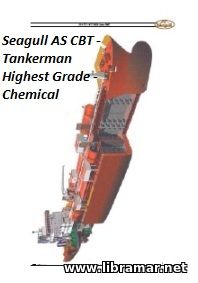 The transportation of chemical cargoes by sea commenced together with the rapid progress in the chemical industry after the World War Two. initially, chemicals were transported in drums or bottles on dry cargo vessels; in case of larger quantities such cargo was transported in bulk in deep tanks. With the increase in the demand for chemicals, it was evident that there was a need for a completely new type of seagoing vessel.
The first chemical ships were the old American oil tankers (T-2, war-built). The conversion scope included adding some bulkheads in order to provide more tanks extending the ship's line systems, and adding some more cargo pumps. This course is the part of the CBT by Seagull AS. It is developed to cover all requirements for levels 1 and 2 training as required by Chapter 5 Reg. V/1 & Sec. A-V/1 Regs. 15-21 of the STCW Convention. The booklet starts with the introduction, followed by course description and main text.
The chapters of the book address such the important aspects of chemical cargo transportation as chemistry and physics of cargo, associated hazards, applicable rules and regulations, vessel design and cargo containment, cargo handling systems, ship safety and marine pollution prevention issues, ballast operation, tank cleaning operations, ship/shore interface, cargo compatibility chart, and other information...
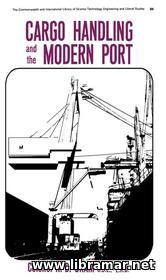 There were two main objectives which the author of this nice book did bear in mind when he was preparing it for release. Firstly, it was his attempt to define the main functions of a sea port in general; his second aim was to explain to the readers how these functions were affected by the silent revolution that has taken place in the major ports of the world since 1945.
All ports are different and it was very difficult task to write a book that would set out every variation of port management and practice in a readable manner. Robert Oram set out the very basic principles applying to the majority of ports. As a result, this book is easy to read and understand and will definitely be considered a nice reference book for everyone involved in the shipping industry. All ports are different and their layout is determined by geographical factors. From the administrative point of view, ports differ even within the same country. You know, even if it was possible to prepare a publication that would set out in detail every variation of practice and management in the port, it would definitely be unreadable.
The author of this book used the alternative approach - he set out the very basic principles applicable to majority of the ports. As declared by him, this approach was used with the intention to make the book readable.
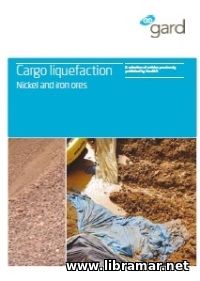 This publication by Gard consists of selected articles addressing the cargo liquefaction, namely happening to the nickel and iron ores cargo. It sheds some light on such the important aspects of this problem as liquefaction of unprocessed ores, describes shifting solid bulk cargoes, provides some update on the latest publications by Intercargo as well as IMSBC Code amendments; the insurance position is also dealt with.
In this booklet some of the important technical issues behind the disasters involving the transportation of unprocessed natural ores and nickel ore are considered. Liquefaction of the mineral ore cargo may result in the cargo shift which, in turn, leads to the loss of stability. This has been one of the major causes of marine accidents for decades.
The main cause of the near misses and even casualties is the poor compliance of the seamen with the certification and testing requirements designed in order to ensure that those cargoes have been loaded with the moisture content being low enough to avoid the liquefaction during the voyage. The cargoes containing even a small number of fine particles and moisture, are considered to be at risk of liquefaction, though they are not necessarily appearing wet.
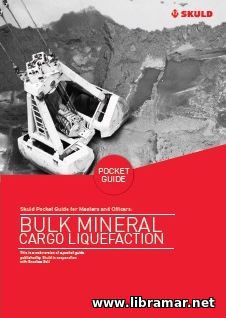 As it is required by SOLAS, each ship must comply with the requirements of the IMSBC Code, as applicable - the purpose of the subject Code is to provide necessary technical guidance on the procedures that have to be adopted during the transportation of various solid bulk cargoes, and it applies to all solid bulk cargoes, with the sole exception of grain. Nowadays, the cargoes falling in the category of liquefaction risk continue to be transported.
Liquefaction related accidents cost the marine insurance industry more than hundred million dollars in the period 2010-2013. All details of the mineral cargoes are listed in the Appendix 1 to the above stated Code together with the info related to their properties and handling and carriage peculiarities. The Code draws the attention of the shippers to the hazards that are associated with the transportation of damp/wet mineral cargoes.
Such cargoes often have high density - thus, their distribution in the cargo holds of the vessel must be specifically considered since any error may inevitably lead to the structural damage of the ship. In addition to that, these cargoes are often loaded at a quite fast pace and such loading may stress the plating of the cargo hold.
|







